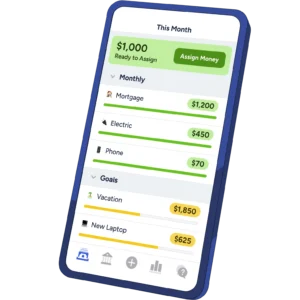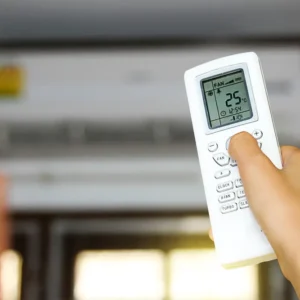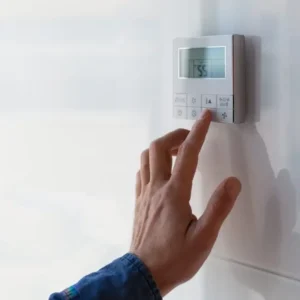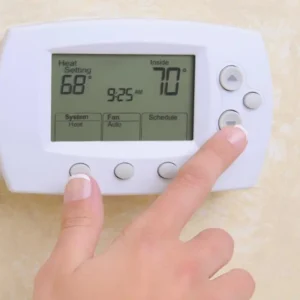Are your winter heating bills burning through your wallet? Ever wonder what the best temperature for your heater in winter is to save money without sacrificing comfort? You’re not alone.
As energy costs continue to soar in both the United States and the United Kingdom, finding the balance between staying warm and saving money has become a top priority for many households. Whether you’re sipping tea in London or enjoying coffee in Chicago, this guide will help you discover the optimal thermostat settings, cost-saving tips, and energy-efficient habits that make a real difference.
Why Heater Temperature Matters in Winter
Heating your home is one of the largest energy expenses during the colder months. According to the U.S. Energy Information Administration (EIA), heating accounts for about 42% of home energy use in America. In the UK, the Office for National Statistics (ONS) reports similar trends, with heating responsible for roughly 55% of energy bills.
Getting your thermostat settings right isn’t just about comfort—it’s about cost control. Setting your thermostat too high means higher bills. Too low, and you’re freezing. So, what’s the sweet spot?
What’s the Best Temperature for a Heater in Winter to Save Money?
The ideal temperature during winter to save money is 68°F (20°C) when you’re at home and awake, and 60°F to 64°F (15°C to 18°C) while you’re asleep or away.
These recommendations come from energy-saving authorities like the U.S. Department of Energy (DOE) and the UK’s Energy Saving Trust.
Why 68°F (20°C)?
- Warm enough to be comfortable with light layers
- Reduces the strain on your heating system
- Saves up to 10% annually on heating bills
Read Also: 10 Proven Ways to Save Money on the Gas Bill
Lowering the temperature even just 1 degree can result in 2-3% energy savings.
Practical Tips to Stick to the Best Temperature for the Heater in Winter
1. Use a Programmable Thermostat
Set it and forget it. These devices automatically adjust temperatures based on your schedule:
- Lower the temp when you’re asleep or not at home
- Raise it shortly before you return or wake up
Smart thermostats like Nest or Hive offer remote control and learning features to optimize settings further.
2. Layer Up
Dressing in warm layers indoors allows you to keep the thermostat lower without discomfort. Think:
- Hoodies
- Wool socks
- Thermal wear
3. Seal Drafts and Insulate
Heat escapes through:
- Doors
- Windows
- Attics
- Floors
Invest in draft excluders, window insulation film, and door sweeps to prevent heat loss.
4. Let the Sun Work for You
Open curtains during sunny winter days to let natural heat in. Close them at night to retain warmth.
5. Use Space Heaters Smartly
Only heat the room you’re using instead of the entire house. Just ensure the heater is energy efficient and has safety features.
USA vs UK: Heating Habits and Adjustments
In the USA:
- Homes are often larger and rely on central heating.
- Smart thermostat adoption is increasing.
- Regional weather varies widely; colder states require more precise control.
In the UK:
- Radiators powered by boilers are common.
- Thermostatic radiator valves (TRVs) allow room-by-room control.
- Homes are smaller and often better insulated.
Read Also: Do Tankless Water Heaters Save Money?
Regardless of geography, sticking to 68°F (20°C) as your target temp works well for both regions when at home.
Myth-Busting: Common Heating Misconceptions
Myth 1: “Leaving the heater on all day at a low setting is cheaper than turning it on and off.”
Fact: You’ll save more by lowering the heat when you’re not home and using a programmable thermostat.
Myth 2: “Turning the heat way up warms your house faster.”
Fact: Heaters work at the same rate regardless of the setting. You’ll just overshoot your target and waste energy.
Myth 3: “Space heaters always save money.”
Fact: Not if used to heat large areas or left on for long hours. Use them only for spot heating in occupied spaces.
Real-World Savings Examples
- Case Study (USA): A family in Denver reduced their winter energy bill by 15% after switching to a programmable thermostat and setting it to 68°F.
- Case Study (UK): A couple in Manchester saved £120 on winter heating by using TRVs and layering up instead of cranking up the central heat.
How to Create a Heating Schedule That Works
Sample Schedule:
Weekdays:
- 6:30 AM – 8:30 AM: 68°F (20°C)
- 8:30 AM – 5:00 PM: 62°F (17°C)
- 5:00 PM – 10:00 PM: 68°F (20°C)
- 10:00 PM – 6:30 AM: 60°F (15.5°C)
Weekends: Adjust based on home occupancy.
Other Ways to Lower Heating Costs
- Service your heating system annually to keep it running efficiently.
- Upgrade to a high-efficiency boiler or furnace if your system is 15+ years old.
- Use ceiling fans in reverse to push warm air downward.
- Keep vents and radiators unblocked for even heating.
When to Call a Professional
If you notice:
- Unusually high bills
- Cold spots
- Noisy heating systems
Call a licensed HVAC professional in the U.S. or a Gas Safe registered engineer in the UK for inspection.
Final Thoughts: Comfort and Savings Can Coexist
Heating your home efficiently doesn’t mean sacrificing comfort. By maintaining 68°F (20°C) when home and dialing it back when you’re not, you strike the perfect balance between comfort and cost savings.
In the USA or UK, the key is consistency, smart tools, and a few lifestyle tweaks. These small changes can lead to big savings—both in energy and money.
Take Action:
- Adjust your thermostat today
- Install a smart thermostat or set a schedule manually
- Dress warmly indoors and insulate your home
Saving money this winter is as simple as turning the dial.






